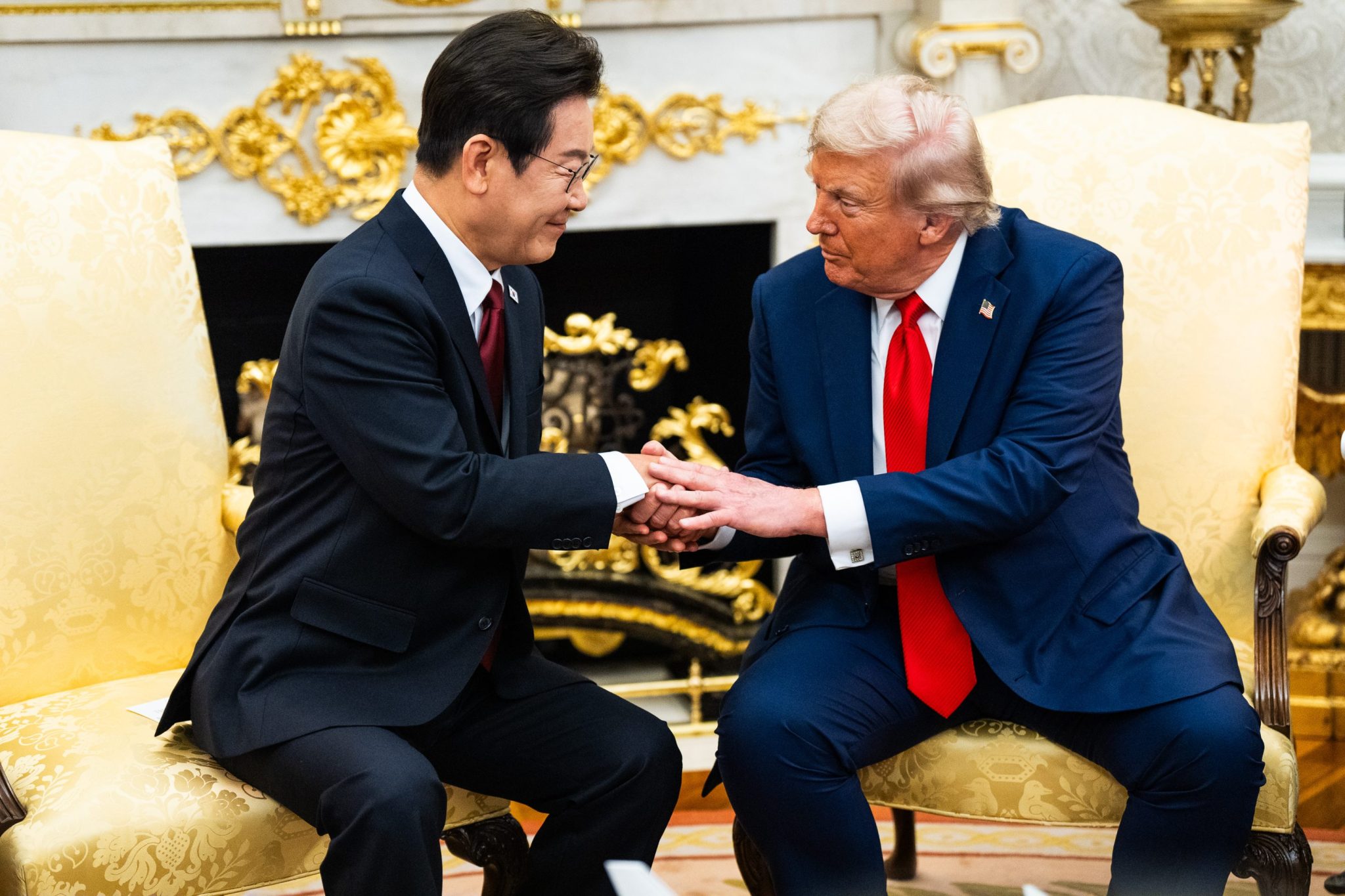
South Korean President Lee Jae-myung joked that he avoided a “Zelensky moment” during his first meeting with US President Donald Trump last August. There was much to celebrate at the long-awaited summit: an agreement to reduce US tariffs on US imports. Its sixth largest trading partner From 25% to 15%, and agreement on the security policies of the two allies towards North Korea.
But — as is now common under the Trump administration — those good feelings quickly soured. A crisis is now brewing that threatens the 72-year alliance and South Korea’s hosting of the APEC summit at the end of this month.
The first sign of trouble was the lack of a joint statement at the Lee Trump summit on August 25. This raised my concern, given my own experience managing US alliances in Asia: These statements, which often come after the first meetings between the two presidents, are crucial in charting the course that the two governments will follow in the coming years.
second, Disagreement over terms Seoul’s $350 billion investment commitment as part of the tariff deal continues to weigh on Korea-US relations. The Korean government agreed to capitalize a fund, in addition to $100 billion in US energy purchases, that Trump could invest in US business and manufacturing as he pleased.
But Lee now argues that the $350 billion investment agreement is Too big for Korean cabinets. Seoul is demanding the amount Equivalent to 84% of its foreign exchange reserves. Thus, fulfilling its commitment would bankrupt the Korean economy – unless Seoul obtains loan guarantees and a currency swap agreement with the United States.
However, for Trump, a deal is a deal. He wants the full $350 billion, and he wants it in cash stocks, not loans. He wants full control over how money is invested in US-owned companies, and the two sides disagree over how to share returns from the fund’s investments.
What makes matters worse: US Secretary of Commerce Howard Lutnick It is said The Koreans want to commit more money, closer to the $550 billion promised by Japan.
Third, ICE’s $4.3 billion raid on Hyundai.LG Electric vehicle battery factory in Georgia and their relocation More than 300 workers It angered South Korea. The United States has the right to impose its own immigration laws, but the Koreans saw the raid as ill-timed and inappropriate. Seoul has Stop now And the huge investments that Trump hopes will bring manufacturing back to the United States
The alliance now looks like a slow-motion train wreck.
Trump, who once described South Korea as “money machine,“He’s likely to make fun of Seoul’s claims of bankruptcy. He is.” Postponing the reduction of customs duties On South Korea as a means of pressure to get what it wants based on its investment demands.
It is not clear how well the South Korean economy can manage the damage caused by Trump’s tariffs. Indeed, the country’s No. 1 export to the United States is automobiles Down 15% year-on-year Due to new import duties. Overall, South Korea’s exports to the United States are as well down 4.1%.
Koreans, angered by images of their citizens being restricted by ICE, may choose to take a tough stance and continue withholding their investments. This may prompt Trump to redouble his efforts, whether by raising tariffs on cars and auto parts to more than the current 25%, or trying to use American forces on the Korean Peninsula.Trump’s complaint is a long-standing one– As a bargaining chip.
The two governments must work to prevent these disputes from getting out of control. Korean companies have been investing in everything from chips to ships, with US investments since 2017 With a total of more than $500 billionThis makes South Korea the largest investor in new fields in the United States.
However, US visa policies have not been able to catch up with the increase in business travel resulting from these abundant investments. The Trump administration was right to send an envoy after ICE Hyundai Raid on Expressing regret and negotiating a new work visa process for South Koreans, despite criticism of the more anti-immigrant MAGA rule.
South Korea’s priority is to reduce tariff rates to 15% as soon as possible. Japan and the European Union now impose tariffs at this level, putting South Korea at a competitive disadvantage. If Seoul backs down from its $350 billion commitment, Trump could impose more tariffs on the country.
If the commitment is too large, the two governments could look for alternative solutions, such as lengthening the performance period, contributing to the investment fund project by project, or crediting recent Korean investments. Other improvements could include a dispute resolution mechanism and a joint working team to evaluate the feasibility of the project.
But it is in both Washington and Seoul’s interests to view these amendments as a fine-grained tweak to an agreement that both sides can tolerate, rather than as part of a “make-or-break” negotiation in which each side is prepared to walk away.
The opinions expressed in Fortune.com reviews are solely those of their authors and do not necessarily reflect the opinions or beliefs luck.
https://fortune.com/img-assets/wp-content/uploads/2025/10/GettyImages-2231437557-e1760089123863.jpg?resize=1200,600
Source link